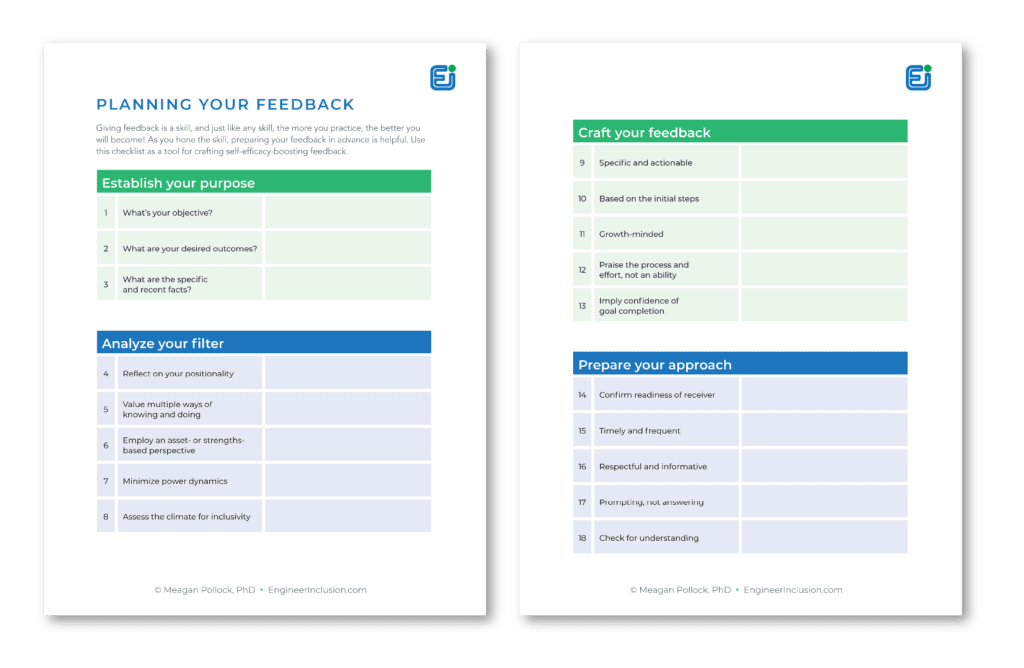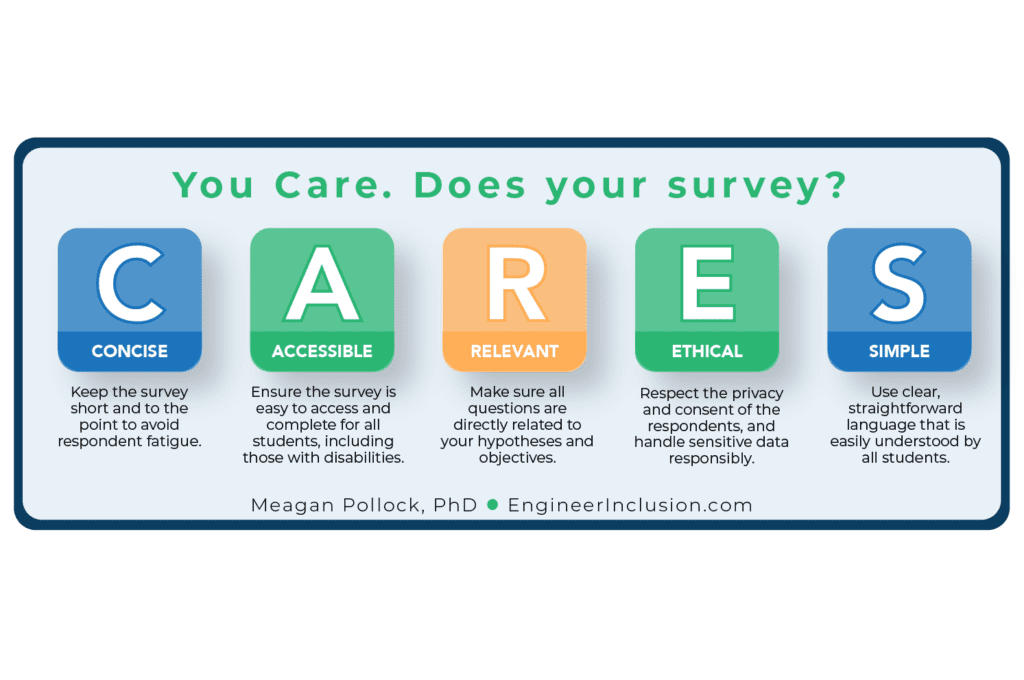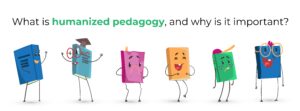Giving feedback is a skill; just like any skill, the more you practice, the better you will become! Preparing your feedback helps ensure we prioritize inclusive practices. Use this four-part checklist to craft self-efficacy-boosting feedback that promotes psychological safety and empowers others to reach their potential. Download a fillable form at the end of this page.

Four Parts
- Establish Your Purpose
- Analyze Your Filter
- Craft Your Feedback
- Prepare Your Approach
Establish Your Purpose
Before offering feedback, it is important to clarify your purpose, desired outcomes, and remind yourself of the facts.
- What’s your objective?
- What are your desired outcomes?
- What are the specific and recent facts?
Analyze Your Filter
One of the most critical steps in planning for and providing feedback is to analyze your filter. What do we mean by a filter?
The way we see and understand the world influences how we interact with others, make decisions, and interpret others’ actions. To be equitable and inclusive leaders, educators, or humans, we must understand how our identities bias our perceptions. We are all complex people with multiple identities. We may identify ourselves by our familial roles, professions, hobbies, or our aspirations. Social and political contexts inform parts of who we are. Some identities are externally visible, some aren’t as salient at times, and others are kept to ourselves.
Who you are, including all of your identities, lived experiences, life exposure, realities, truths, traumas, and thoughts, influence how you perceive everything in the world. All of these things become a LENS through which everything is filtered, and we must recognize the power of the personal lens, also known as our positionality.
Additional things to consider are the ways in which you can de-center or de-prioritize dominant norms, or ways of knowing and doing. If that's a new concept for you, that's okay! A good place to start is to learn about power and privilege. You can also examine individualistic and collectivist ways of knowing and doing, and funds of knowledge theories.Want to learn more about how to incorporate the following into your practice? We can help!
- Reflect on your positionality (Learn more here)
- Value multiple ways of knowing and doing
- Employ an asset- or strengths-based perspective
- Minimize power dynamics
- Assess the climate for inclusivity
Craft your feedback
The next step is to craft the feedback you want to give. The final two sections draw on the most common research around feedback, in addition to self-efficacy (Bandura), mindset (Dweck), wise feedback (Yeager) and motivation theory.
- Specific and actionable
- Based on the initial steps
- Growth-minded
- Praise the process and effort, not an ability
- Imply confidence of goal completion
Prepare your approach
And finally, it's time to prepare your approach, and practice inclusive communication skills while delivering the feedback. Listening is crucial!
- Confirm readiness of receiver
- Timely and frequent
- Respectful and informative
- Prompting, not answering
- Check for understanding
Download this resource as a printable PDF and digital worksheet.

When you download this resource, you agree to be added to our mailing list. We send about one email with resources and strategies every week. You can unsubscribe at any time.











